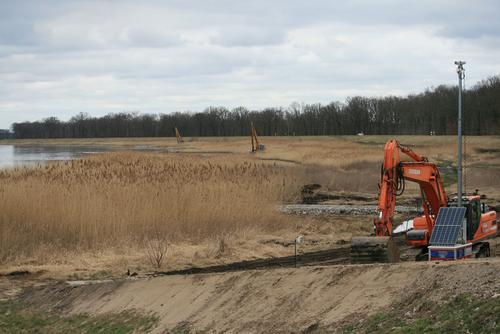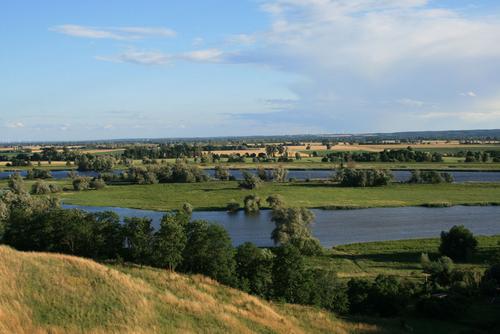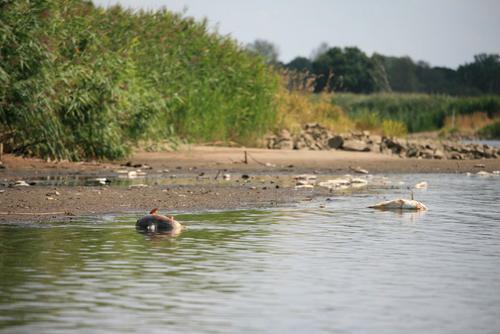++ Third anniversary of Oder fish die-off ++ Rethink necessary for a natural river ecosystem ++ International alliance demands joining in a sustainable vision for the Oder ++

Excavators on the Polish side of the Oder. There are plans to degrade the river to a waterway.
© Sascha Maier/BUND
The Oder is one of the last near-natural rivers in Central Europe. Many rare animal and plant species live in the river or on its banks.
© Sascha Maier/BUND
The fish kill in August 2022 was one of the biggest environmental disasters in Europe in recent times. The ecosystem has still not recovered from it.
© Sascha Maier/BUNDBerlin, Radolfzell. It is the third anniversary of the catastrophic fish die-off in the Oder this summer: between July and September 2022, approximately 1,000 tons of fish and countless molluscs perished in the Polish and German part of the river – following an algal bloom. To prevent such an ecological disaster from happening again, Bund für Umwelt und Naturschutz Deutschland (BUND) and EuroNatur call on the German, Polish and Czech governments to join in their “Vision for the Oder.” The two organisations advocate for making the riverscape more resilient against environmental impacts such as droughts and heat stress and also against nutrient and pollutant inputs, including concrete conservation measures on the ground as well as intensified cross-border cooperation.
The 2022 fish die-off was caused by an interplay of heat, drought and high salt discharges by Polish mines. The consequences for the river ecology and regional tourism were considerable. Both riparian states have adopted some measures – for example better international communication in case of a disaster or sanctions against prohibited discharges into the river. But at the same time, they have promoted the further development of the Oder.
Theresa Wagner, BUND Coordinator of Oder conservation: “There has been no rethink, even in the face of disaster. Salt is still being discharged into the Oder and development plans continue to be realised. All this is damaging the river. We need to preserve the Oder as a near-natural, biodiverse space for the local residents and for all of us.” BUND and other conservation associations recently won a lawsuit in January at Warsaw Voivodeship Administrative Court to revoke the permit for Oder development in Poland. The lawsuit alliance, BUND Brandenburg among it, now expects the removal of illegal buildings or ecological compensation measures.
Annette Spangenberg, Head of Programme Fresh Water at EuroNatur: “Our vision is to preserve the Oder as a natural river ecosystem and develop it sustainably. For example by sustainable infrastructures for tourism, such as enhancing the Rivers Oder and Neisse Cycling Route. Additionally, we have to equip the river for climate change and future heat wave summers; renaturation measures like the restoration of natural water retention areas are part of this. We also want to reduce people’s emotional distance to the river – the Oder is, in contrast to its image, a river teeming with life.”
Background information:
|
Press contakt:
Theresa Wagner, BUND, theresa.wagner(at)bund.net, Tel.: Tel +49 (0) 30 27586-525
Christian Stielow, EuroNatur, christian.stielow(at)euronatur.org, Tel.: +49 (0)7732 – 92 72 15


